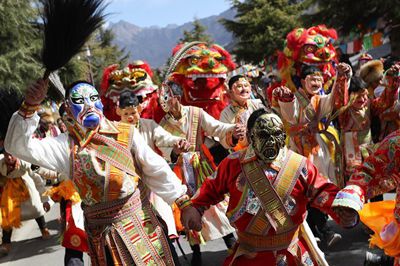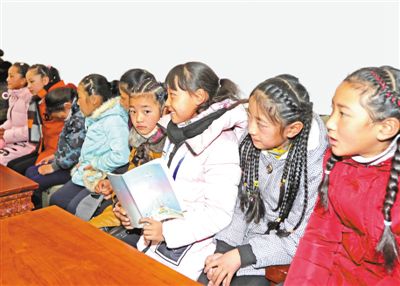|
2. Are there any historical facts providing supporting evidence that Tibet has long been an inseparable part of China?
A: China is a unified multi-ethnic country with d56 ethnic groups. It is a nation that has been formed from many different ethnic groups during the course of a long period of historical development, which has made Tibet an inseparable part of China.
1. Friendly exchanges between the Han and Tibetan people go back to ancient times. According to The Book of the Later Han Dynasty of the early 5th century, the Faqiang (ancestors of the Tibetans) had exchanges with the Hans of the central plains from 477 B. C. through to the 4th century. To date, this is the earliest written record of Han-Tibetan contacts discovered. In the early 7th century, the Xiboye tribe flourished in Yalong, Tibet. From among its members emerged the noted national hero in Tibetan history, Songtsan Gambo, who annexed more than ten tribes and established the Tubo Kingdom (629-846). To consolidate and develop the Tubo slave rule, Songtsan Gambo advocated absorbing the advanced culture of the centralized authority of the Tang Dynasty (618-907) on the central plains. Songtsan Gambo married princess Wencheng (?-680) of the Tang Dynasty, and developed close ties with the Hans in politics, economy and culture. In 821, the Tang court and the Tubo Kingdom formed an alliance. "We conferred about uniting our countries and concluded a treaty of alliance. This will never change. May the gods confirm it. Generations to come will forever glory in it." In this way, a close political alliance was formed which later served as the foundation for a united country.
2. In the 13th century, Tibet became an administrative region of China. In 1206, Genghis Khan (1162-1227), leader of the Mongolians, began to expand his power, after establishing the Mongol Khan court. In 1244 Go Dan, prince of the Mongol Khan court, sent envoy Dorta Napo to Tibet with special instructions to invite Kongka Gyanincain (182-1241) of the Sagya Sect in Tibet to Liangzhou (now Wuwei City in Gansu Province) to negotiate Tibet's peaceful allegiance to the Mongol Khanate. In 1247, after Go Dan and Kongka Gyaincain hand agreed on the conditions for securing Tibet's allegiance to the Mongols, Kongka Gyaincain wrote to the leaders of all sects in Tibet in an effort to persuade them to obey the Mongol Khan. These two important historical documents are included in "The Sagya Lineal Descriptions" in Tibetan. In 1260, Kublai Khan (1215-1294),upon inheriting the throne of the Mongol Khan, became first emperor of the Yuan Dynasty. He conferred the title of "Imperial Tutor" upon Kongka Gyaincain's nephew Pagba (1235-1280), Prince of Dharma of the Sagya Sect, and presented him with a jade seal.
In 1271, Kublai Khan established his dynasty under the name of Yuan. Later, after overcoming the Southern Song Dynasty (1127-1279) and unifying China, heset up a central regime with Dadu (today's Beijing) as the capita;. The Yuan Dynasty took Tibet as an administrative region under the direct control of the central government and exercised jurisdiction over it. |
- Home
- News |Tibet |Exclusive |China |World |Other Tibetan-Inhabited Area |Tibet through the Eyes of Foreigners |Related News
- Documents |White Papers |Others
- Photo |Politics |Economy & Society |Culture & Religion |Human & Nature |Beautiful Tibet |Other Tibetan-Inhabited Area |Exchanges |Related
- Video |News |Documentary |Micro-Video |Entertainment
- Art
- Tourism
- In Focus
- About Tibet






